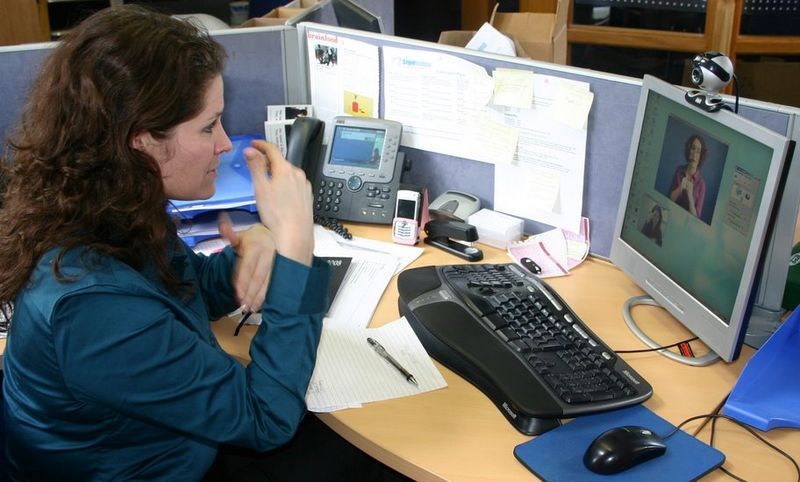Telecommunication Relay Services (TRS)
Telecommunications Relay Services allows people with hearing or speech disabilities to place and receive telephone calls. Public entities’ staff who answer the telephone must treat relay calls like other calls. TRS calls usually take more time than “regular” calls. If you get a call from a relay service don’t hang up! They are not telemarketers.
Here are the two most common Telecommunication Relay Services:
Video Relay Service (VRS) is used by people who prefer sign language communication rather than typing. The person who is deaf signs to the communication assistant who then voices to the hearing telephone user what the person is signing. The communication assistant listens to the voice telephone user and signs to the person who is deaf what a voice telephone user says.
Text-to-Voice TTY-based is a "traditional" TRS service. The person with a disability uses a TTY or other text input device to contact a communication assistant at the telephone relay center. TTYs allow people to type their telephone conversations. The communication assistant contacts the hearing telephone user and reads the text that the caller typed. The callee voices to the communication assistant. The communication assistant relays the call back and forth between the parties by speaking what a text user types, and typing what a voice telephone user says.
For both services, the communication assistant will explain to the voice telephone user how the system works.
TRS works in both directions. If a public entity wants to contact a person who can’t use a phone system the “regular” way, the TRS can be used. The public entity contacts the TRS, provides the individuals phone number, the TRS communication contacts the individual being called and communication occurs. Again, this could be by video relay service or TTY relay.
For most public entities the telecommunication relay service provides “effective communication” for people with disabilities communicating by telephone.
Examples
-
A state consumer affairs agency has toll-free telephone assistance on identity theft. The agency will be in compliance with the ADA if it provides telephone assistance to people who call using the telecommunication relay service
Title II Regulations 28 § 35.161
Telecommunications
(a) Where a public entity communicates by telephone with applicants and beneficiaries, text telephones (TTYs) or equally effective telecommunications systems shall be used to communicate with individuals who are deaf or hard of hearing or have speech impairments. (b) When a public entity uses an automated-attendant system, including, but not limited to, voice mail and messaging, or an interactive voice response system, for receiving and directing incoming telephone calls, that system must provide effective real-time communication with individuals using auxiliary aids and services, including TTYs and all forms of FCC-approved telecommunications relay system, including Internet-based relay systems. (c) A public entity shall respond to telephone calls from a telecommunications relay service established under Title IV of the ADA in the same manner that it responds to other telephone calls.


User Comments/Questions
Add Comment/Question